#Aerial Mapping
Explore tagged Tumblr posts
Text
Drone Mapping Solutions Australia | Drone Survey | AUAV
AUAV provides cutting-edge Drone Technology Solutions throughout Australia. Stay ahead with our innovative applications for various sectors. From data capture to visual media, our offer tailored drone services.
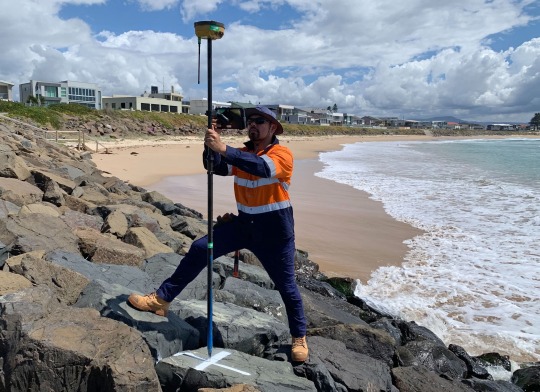
#Drone Surveying Australia#Drone Land Surveying#Drones for Survey#Drone Survey Company#Aerial Survey Mapping Drones#Aerial Survey using Drones#Drone Survey Mapping Solutions#Drone Mapping Solutions Australia#Aerial Mapping#Drone Survey#Drone Mapping#Aerial Survey#Australian Aerial Mapping
0 notes
Text
Unlocking the Power of Drone Surveying Services in Delhi: The Best Geospatial Solutions
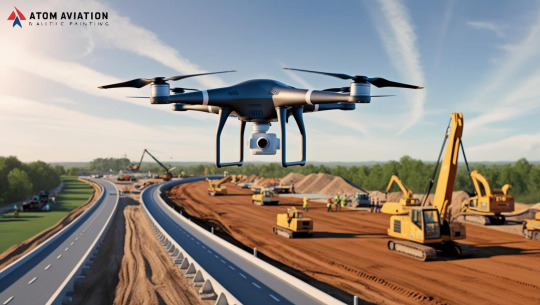
In today’s fast-paced world, drone surveying services are proving to be a game-changer, especially in Delhi, where urban growth and infrastructure projects are booming. With the rapid advancements in drone technology in Delhi, industries have discovered a more efficient way to gather geospatial data, significantly transforming how surveys are conducted.
Aerial survey companies in Delhi are leading the charge by utilizing drones to provide high-precision data collection for a variety of industries. Whether it’s for construction, agriculture, or environmental monitoring, drones offer a level of accuracy that traditional methods simply can’t match. Gone are the days of relying on costly manual labor and time-consuming equipment. Instead, drones swiftly capture high-resolution images and 3D models, delivering valuable insights that streamline decision-making and reduce project timelines.
When searching for the best drone services, it’s crucial to choose a provider that offers comprehensive geospatial solutions. These solutions not only include aerial imagery but also topographical mapping, volumetric analysis, and real-time data collection. This makes drone services an invaluable asset for land assessments, project planning, and site management.
The rise of drone technology has made it easier for businesses to gather critical data in less time, at a lower cost, and with greater precision. Whether you need to monitor the progress of a construction project or assess land for agricultural purposes, drone surveying services in Delhi can provide the accuracy and speed needed to stay ahead of the competition.
With the continuous evolution of drone technology, the future of surveying is looking brighter than ever. By choosing the right aerial survey company in Delhi, you can unlock the full potential of drone technology and gain a competitive edge in your industry.
For innovative and reliable geospatial solutions, drone surveying services in Delhi offer the best way forward. Let the power of drones revolutionize your data collection processes and take your projects to new heights!
#drone technology#road construction#aerial mapping#surveying techniques#land development#construction planning
1 note
·
View note
Text
Aerial Imaging Market Is Estimated To Witness High Growth Owing To Increasing Adoption of Drone Technology and the Trend of Digital Mapping

The global aerial imaging market is estimated to be valued at US$2,582.60 million in 2021 and is expected to exhibit a CAGR of 15.4% over the forecast period (2022-2030), as highlighted in a new report published by Coherent Market Insights.
A) Market Overview: The aerial imaging market involves the capture and analysis of images taken from an elevated viewpoint, typically from unmanned aerial vehicles (UAVs) or drones. These images are used in various industries such as agriculture, construction, real estate, environmental monitoring, and defense, among others. Aerial imaging provides valuable insights and helps in decision-making processes by offering accurate and up-to-date information.
Some use cases of aerial imaging include crop monitoring, land surveying, infrastructure inspections, disaster management, and urban planning. Drones equipped with high-resolution cameras and remote sensing technologies enable efficient data collection, resulting in improved efficiency and reduced costs for businesses.
B) Market Dynamics:
1. Increasing adoption of drone technology: The use of drones in aerial imaging has significantly increased in recent years. Drones offer flexibility, ease of use, and cost-effectiveness compared to traditional aerial imaging methods such as manned aircraft or satellites. They can reach areas that are inaccessible or hazardous for humans and capture high-resolution imagery. The availability of advanced features such as thermal imaging, LiDAR scanning, and artificial intelligence (AI) integration further enhances their value for various applications.
'For example, in the agriculture industry, drones equipped with multispectral cameras can provide farmers with valuable information about crop health, water stress, and nutrient deficiencies. This helps in optimizing irrigation, fertilization, and pest control practices. 'For example, in the agriculture industry, drones equipped with multispectral cameras can provide farmers with valuable information about crop health, water stress, and nutrient deficiencies. This helps in optimizing irrigation, fertilization, and pest control practices.
2. Trend of digital mapping: The trend of digital mapping is driving the demand for aerial imaging. Digital mapping involves the creation of virtual representations of the Earth's surface using aerial photographs, satellite imagery, and other geospatial data. It provides accurate and detailed information about topography, land cover, infrastructure, and other spatial features.
Digital maps find applications in urban planning, infrastructure development, transportation management, and environmental analysis, among others. Aerial imaging plays a crucial role in updating and maintaining these digital maps. The use of drones for aerial surveying and mapping enables faster data collection, higher resolution imagery, and more frequent updates compared to traditional surveying methods.
C) Market key trends: The key trend in the aerial imaging market is the integration of AI and machine learning algorithms. AI-powered software can automate image processing tasks such as object detection, classification, and feature extraction. This significantly reduces the manual effort required for data analysis and enhances the efficiency of aerial imaging workflows.
For instance, AI algorithms can automatically detect and count objects such as cars, trees, or buildings in aerial images. This information can be used for urban planning, traffic monitoring, or vegetation assessment. AI-based analytics also enable real-time decision-making by providing actionable insights from aerial imagery.
D) SWOT Analysis:
Strengths:
High-resolution imagery for accurate data collection
Flexibility and cost-effectiveness of drone technology
Weaknesses:
Regulatory challenges related to drone operations
Vulnerability to weather conditions for outdoor imaging
Opportunities:
Growing demand for aerial imaging in emerging economies
Integration of aerial imaging with other technologies such as LiDAR and AI
Threats: ·
Concerns regarding privacy and data security
Competition from satellite imagery providers
#Coherent Market Insights#Smart Technologies#global aerial imaging market#Remote Sensing#Drone Imaging#Satellite Imagery#Aerial Mapping
0 notes
Text
I've been tracking this down for a while now and I've finally found confirmation of what I suspected: Google Maps imagery for Piha Beach in Aotearoa New Zealand captured the setup for filming of Our Flag Means Death's Season 2, Episode 8!
[EDIT 25 June: the north end current imagery is sadly no longer this version, but I've captured it for posterity here, and it's still visible in the free Google Maps Pro app- read on for more info].
On the left is the north end of Piha Beach with the inn set. On the right is the south end carpark with the film crew base.

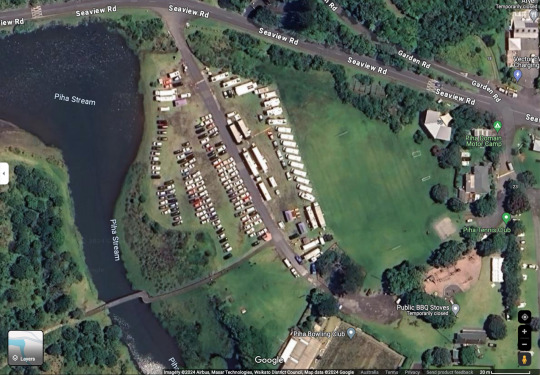
Why is that cool to me? Because it truly was a fleeting moment in time, no more than a handful of days of possibility, and yet it was captured as the image on the map, at least for a period of time. As an archaeologist I love a moment preserved in time, and in this one you can even see the OFMD production crew on the beach and on the path. It's places and people caught in the flashbulb of this aerial image.
The specifics of how I pinned down the imagery and the date are in this Twitter thread, but the short version is, I was hunting for a better visual on the area immediately surrounding the inn while writing Full Fathom Five, and noticed that the carpark in particular seemed to line up exactly with images from the final day of filming.
The final day of filming overall was 13 December 2022, filming at Piha was on 12 December 2022, and this aerial image was taken on 11 December 2022.


I had already been through the first image to make a comparison to the aerial map and it looked like a match, but Google Maps had 2024 in their attribution. [Noting that I'd put 13 Dec on my image notes, but I'd got that tangled with the last day of filming in the Kumeū studio the next day, and it was 12 Dec on location].
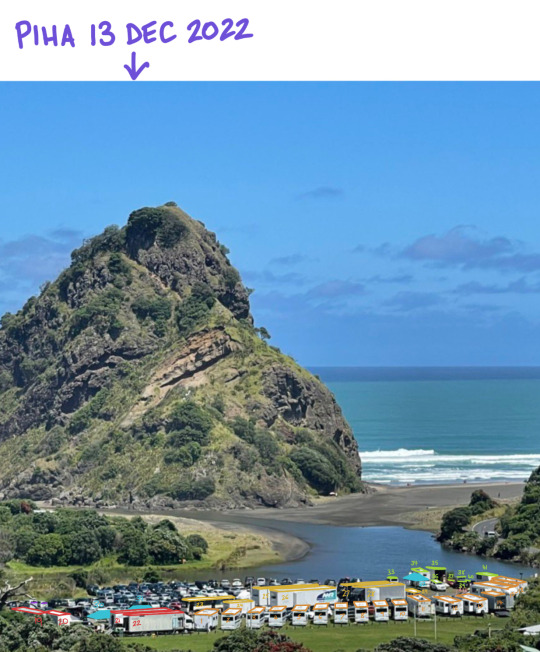

Thankfully Google Earth came through with the actual date.

And I just took a further dig into Google Earth Pro, which allows you to switch between previous satellite images, and it confirms a date of 11 December 2022 for the north end image as well.
[EDIT 9 September 2024- thinking about this again and suddenly realised... you know what, very often things will put the date it was in the US when a picture was taken, even when that picture was taken on the other side of the world, in a different timezone. Which made me realise that actually, if this was taken on the 11th of December in the US, that was on the 12th of December in AoNZ. A quick search shows that Google Maps confirms the date can be one day out, so- odds increasing that we're seeing the actual filming of Ep8 here!]

You can also compare this to a few months earlier in March 2022, right around the premiere of OFMD S1 (everything moved so fast in hindsight!) when there was no inn in that spot.

Which means we now know that for now, if you hop onto Google Maps (not Google Earth, because they have a different image for the north end that does come from 2024) and zing on down to Piha Beach, you can take a look at a preserved moment in time from the filming of S2Ep8.
[EDIT 25 June: the north end image has now been updated to the 2024 version across all of Google Maps and Google Earth, but the south end is for now still from the filming day. You can find the previous version for the north end on Google Earth Pro].
You can hop straight to the inn here.
And straight to the parking lot here.
And remember to put the layers into Satellite mode to view the aerial imagery.
Everything that was/is shown at the north end lines up with what we've seen both in the show and in behind the scenes content, all of which I delved into in this Twitter thread last month. That goes into a lot more detail about specifics, but the evidence is solid across the board.
The sandy path that runs beside the inn is a distinct feature seen in the show.


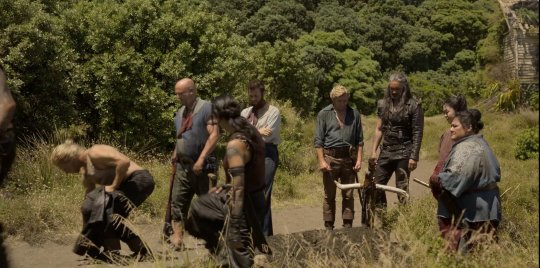

The peak that sits behind it, likewise (from Google Maps user uploads here and here).



The inn itself, and the way the path gives way to an unseen carpark, from Simone Nathan's TikTok video.
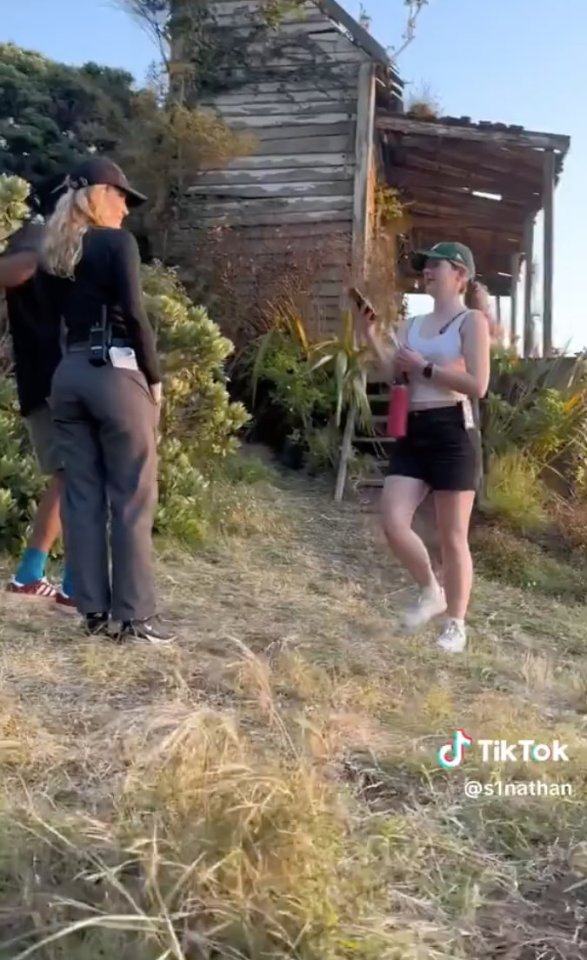

Based on all of that, it's easy to see that we've got our inn right here circled in red, preserved in that moment in time, even though it was no doubt taken down as soon as filming was done.
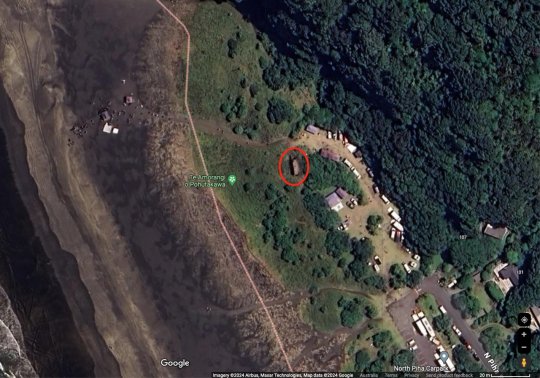
Prep looks like it took a couple of days before filming; filming was pretty much done in a day, according to an article at the time.
So, there you have it- it's a minor little thing and it won't be up forever, but for now you can hop into Google Maps and see an aerial view adjacent to the filming of S2Ep8 at Piha. The other beach scenes from Eps 1, 3 and 8 were filmed at Te Henga/ Bethells Beach.
435 notes
·
View notes
Text
About the entanglement of "science" and Empire. About how children are encouraged participate in these imperial "scripts".
Was thinking about this recent thing:

The caption reads: "Toys and board games, 1940." And I think the text on the game-box in the back says something like "the whole world is yours", maybe? (Use of appeals to science/progress in imperial narratives is a thing already well-known, especially for those familiar with Victorian era, Edwardian era, Gilded Age, early twentieth century, etc., in US and Europe.)
And was struck, because I had also recently gone looking through other posts about the often-strange imagery of children's material in late nineteenth- and early twentieth-century US/Europe. And was disturbed/intrigued by this thing:
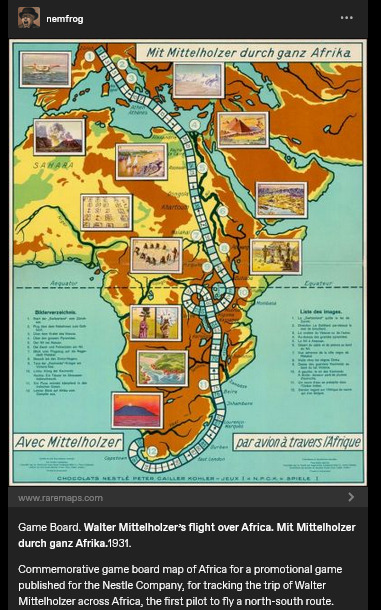
Caption here reads: "Game Board. Walter Mittelholzer's flight over Africa. [...] 1931. Commemorative game board map of Africa for a promotional game published for the N*stle Company, for tracking the trip of Walter Mittelholzer across Africa, the first pilot to fly a north-south route."
Hmm.
I went to learn more about this: Produced in Switzerland. "Africa is for your consumption and pleasure. Brought to you by the N#stle Company!" (See the name-dropping of N#stle at the bottom of the board.) A company which, in the preceding decade, had shifted focus to expand its cacao production (which would be dependent on tropical plantations). Adventure, excitement, knowledge, science, engineering prowess, etc. For kids! (In 1896, Switzerland had hosted a "human zoo" at the Swiss Second National Exhibition in Geneva, where the "Village Noir" exhibit put living people on display; they were over two hundred people from Senegal, who lived in a "mock village" in Geneva's central square.)
Another, from a couple decades earlier, this time English-language.
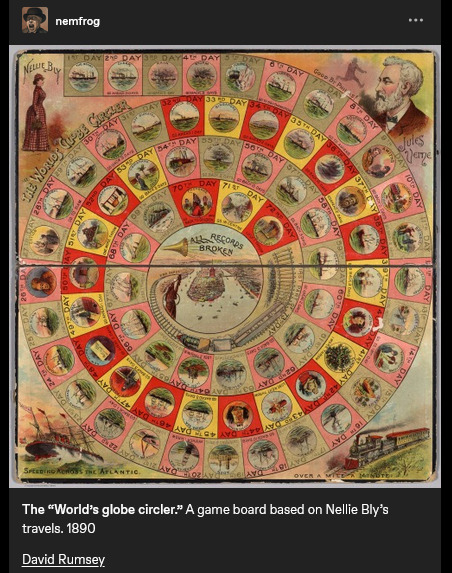
Caption reads: "The "World's globe circler." A game board based on Nellie Bly's travels. 1890." At center, a trumpet, and a proclamation: "ALL RECORDS BROKEN".
Went to find more info: Lithographed game board produced in New York. Images on the board also show Jules Verne; Bly, in real-world travels, was attempting to emulate the journey of the character Phileas Fogg in Verne's Around the World in Eighty Days (1872).
Game produced in the same year that the United States "closed the frontier" and conquered "the Wild West" (the massacre at Wounded Knee happened in December 1890). A couple years later, the US annexed Hawai'i; by decade's end, the US military was in both Cuba and the Philippines. The Scramble for Africa was taking place. At the time, Britain especially already had a culture of "travel writing" or "travel fiction" or whatever we want to call it, wherein domestic residents of the metropole back home could read about travel, tourism, expeditions, adventures, etc. on the peripheries of the Empire. Concurrent with the advent of popular novels, magazines, mass-market print media, etc. Intrepid explorers rescuing Indigenous peoples from their own backwardness. Many tales of exotic allure set in South Asia. Heroic white hunters taking down scary tigers. Elegant Englishwomen sipping tea in the shade of an umbrella, giggling at the elephants, the local customs, the strange sights. Orientalism, tropicality, othering, paternalism, etc.
I'd lately been looking at a lot of work on race/racism in British scientific and pop-sci literature involving natural history or geographical imaginaries. (From scholars like Varun Sharma, Rohan Deb Roy, Ezra Rashkow, Jonathan Saha, Pratik Chakrabarti.) But I'd also lately been looking at Mashid Mayar's work, which I think closely suits this kinda thing with the board games. Some of her publications:
"From Tools to Toys: American Dissected Maps and Geographic Knowledge at the Turn of the Twentieth Century". In: Knowledge Landscapes North America, edited by Kloeckner et al., 2016.
"What on Earth! Slated Globes, School Geography and Imperial Pedagogy". European Journal of American Studies 16, number 3, Summer 2020.
Citizens and Rulers of the World: The American Child and the Cartographic Pedagogies of Empire, 2022.
Discussing her book, Mayar was interviewed by LA Review of Books in 2022. She says:
[Quote.] Growing up at the turn of the 20th century, for many American children, also meant learning to view the world through the lens of "home geography." [...] [T]hey inevitably responded to the transnational whims of an empire that had stretched its dominion across the globe [recent forays into Panama, Cuba, Hawai'i, the Philippines] [...]. [W]hite, well-to-do, literate American children [...] learned how to identify and imagine “homes” on the map of the world. [...] [T]he cognitive maps children developed, to which we have access through the scant archival records they left behind (i.e., geographical puzzles they designed and printed in juvenile periodicals) [...] mixed nativism and the logic of colonization with playful, appropriative scalar confusion, and an intimate, often unquestioned sense of belonging to the global expanse of an empire [...]. Dissected maps - that is, maps mounted on cardboard or wood and then cut into smaller pieces that children were to put back together - are a generative example of the ways imperial pedagogy [...] found its place outside formal education, in children's lives outside the classroom. [...] [W]ell before having been adopted as playthings in the United States, dissected maps had been designed to entertain and teach the children of King George III about the global spatial affairs of the British Empire. […] [J]uvenile periodicals of the time printed child-made geographical puzzles [...]. [I]t was their assumption that "(un)charted," non-American spaces (both inside and outside the national borders) sought legibility as potential homes, [...] and that, if they did not do so, they were bound to recede into ruin/"savagery," meaning that it would become the colonizers' responsibility/burden to "restore" them [...]. [E]mpires learn from and owe to childhood in their attempts at survival and growth over generations [...]. [These] "multigenerational power constellations" [...] survived, by making accessible pedagogical scripts that children of the white and wealthy could learn from and appropriate as times changed [...]. [End quote.] Source: Words of Mashid Mayar, as transcribed in an interviewed conducted and published by M. Buna. "Children's Maps of the American Empire: A Conversation with Mashid Mayar". LA Review of Books. 11 July 2022.
Some other stuff I'd recently put in a to-read list, specifically about European (especially German) geographical imaginaries of globe-as-playground:
The Play World: Toys, Texts, and the Transatlantic German Childhood (Patricia Anne Simpson, 2020) /// "19th-Century Board Game Offers a Tour of the German Colonies" (Sarah Zabrodski, 2016) /// Advertising Empire: Race and Visual Culture in Imperial Germany (David Ciarlo, 2011) /// Learning Empire: Globalization and the German Quest for World Status, 1875-1919 (Erik Grimmer-Solem, 2019) /// “Ruling Africa: Science as Sovereignty in the German Colonial Empire and Its Aftermath” (Andrew Zimmerman. In: German Colonialism in a Global Age, 2014) /// "Exotic Education: Writing Empire for German Boys and Girls, 1884-1914". (Jeffrey Bowersox. In: German Colonialism and National Identity, 2017) /// Raising Germans in the Age of Empire: Youth and Colonial Culture, 1871-1914 (Jeff Bowersox, 2013) /// "[Translation:] (Educating Modernism: A Trade-Specific Portrait of the German Toy Industry in the Developing Mass-Market Society)" (Heike Hoffmann, PhD dissertation, Tubingen, 2000) /// Home and Harem: Nature, Gender, Empire, and the Cultures of Travel (Inderpal Grewal, 1996) /// "'Le rix d'Indochine' at the French Table: Representation of Food, Race and the Vietnamese in a Colonial-Era Board Game" (Elizabeth Collins, 2021) /// "The Beast in a Box: Playing with Empire in Early Nineteenth-Century Britain" (Romita Ray, 2006) /// Playing Oppression: The Legacy of Conquest and Empire in Colonialist Board Games (Mary Flanagan and Mikael Jakobsson, 2023)
#mashid mayar book is useful also the Playing Oppression book is open access online if you want#in her article on slated globes mayar also mentions how european maps by 1890s provoked a sort of replete homogenous filling in of globe#where european metropole thought of itself as having sufficiently mapped the planet by now knit into neat web of interimperial trade#and so european apparent knowledge of globe provided apparently enlightened position of educating or subjugating the masses#whereas US at time was more interested in remapping at their discretion#a thing which relates to what we were talking about in posts earlier today where elizabeth deloughrey describes twentieth century US#and its aerial photographic and satellite perspectives especially of Oceania and Pacific as if it now understood the totality of the planet#ecologies#tidalectics#geographic imaginaries#mashid mayar#indigenous pedagogies#black methodologies#tigers and elephans#victorian and edwardian popular culture#my writing i guess
143 notes
·
View notes
Text
Shattered Sky Temple [23×33] by Forgotten Adventures
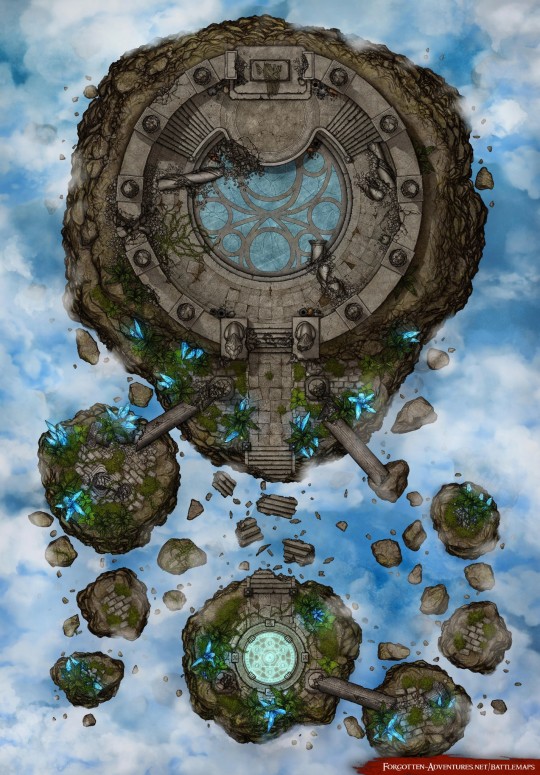
#forgotten adventurea#shattered#sky#temple#temples#aerial#flying#floating#islands#airborn#map#maps#ruin#ruins
75 notes
·
View notes
Text

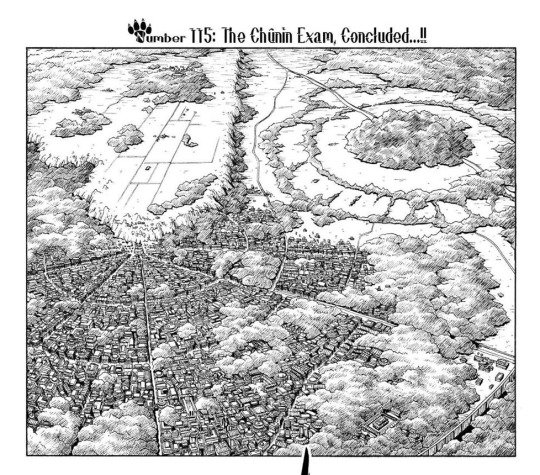
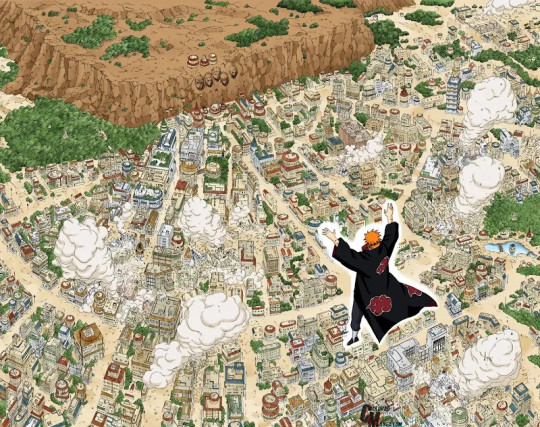
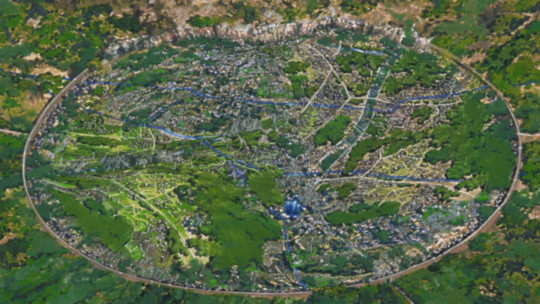

These are all aerial views or maps of Konoha from across the series. The first is from Naruto episode 200, the second to last part of the arc with Genno the Trapper (anime filler). The second (black and white) is from chapter 115 of the manga, from the Konoha Crush arc. The third is from chapter 429 when Pain destroyed Konoha. The fourth is from Shippuden 469, which was anime filler. The last is a shot of Konoha once it was destroyed by Pain, though I do not know the specific episode. Correction, it was Shippuden 165
As you might be able to tell, there's a strange inconsistency as far as how Konoha is meant to look/be shaped.
#naruto#narutogeography#naruto geography#Konoha#The Land of Fire#Naruto 200#Naruto Chapter 115#Naruto Chapter 429#Shippuden 469#Aerial view#Aerial View of Konoha#Map of Konoha#Shippuden 165
31 notes
·
View notes
Text

Torchlights
#Edinburgh#Scotland#Scottish map#torchlights#Hogmanay#capital city#new year's eve#Auld Reekie#cityscape#heritage#tradition#night photo#aerial view#UK#Happy 2025!
25 notes
·
View notes
Text
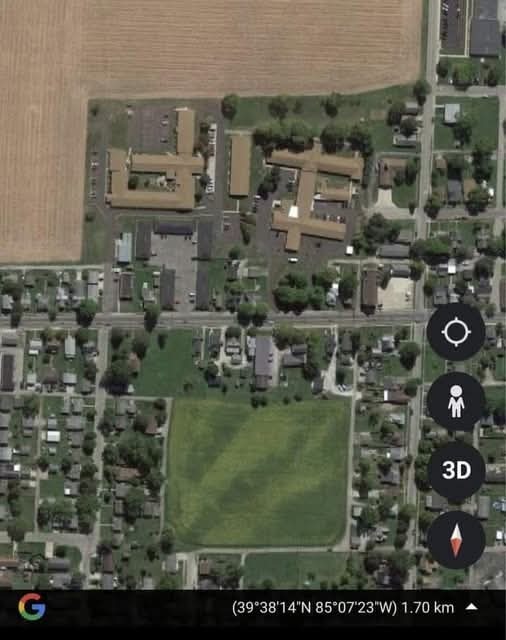
These 3 buildings are a nursing home built between 1973-1975. 😬
3 notes
·
View notes
Text
Aerial Survey | Drone Survey | Drone Survey Company | AUAV
AUAV’s aerial survey using drones delivers efficient mapping and inspection data for industries across Australia. Let AUAV provide the aerial insights your projects need.

#Aerial Survey#Drone Mapping#Drone Survey#Aerial Mapping#Drone Mapping Solutions Australia#Drone Survey Mapping Solutions#Aerial Survey using Drones#Aerial Survey Mapping Drones#Drone Survey Company#Drones for Survey#Drone Land Surveying#Drone Surveying Australia
0 notes
Text
Ultimate Guide to Drone Survey by Atom Aviation
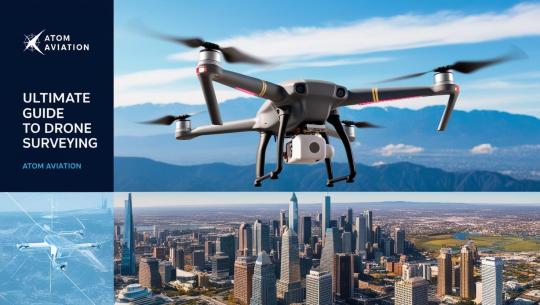
Introduction to Drone Survey
What is a Drone Survey?
A drone survey involves the use of unmanned aerial vehicles (UAVs) equipped with advanced sensors and cameras to capture aerial data for mapping and surveying purposes. Drones have revolutionized traditional surveying methods by offering a faster, more accurate, and cost-effective solution. As a leading drone survey and GIS company in India, Atom Aviation utilizes high-tech drones to perform land surveys, topographic surveys, and create detailed 3D models. These UAVs equip various sensors, such as LiDAR and RTK GPS, to allow for precise measurements and geospatial data collection.
The process of drone surveying begins when the drone launches and flies over the designated area. As the drone captures images and other data points, it processes and analyzes this information using GIS (Geographic Information System) software to create accurate maps, models, and other essential datasets. Drone surveys are suitable for a wide range of applications, including land management, construction, agriculture, and environmental monitoring. Compared to traditional surveying methods, drone surveys are quicker, less expensive, and able to capture hard-to-reach areas, providing a comprehensive and reliable dataset for decision-making.
Importance of Drone Surveying in Modern Industry
The importance of drone survey in modern industry cannot be overstated. As industries continue to evolve, the demand for accurate, up-to-date, and detailed data has increased. Drone surveying allows companies to collect high-quality aerial data quickly and efficiently, which is crucial for industries such as construction, real estate, agriculture, and urban planning.
As a drone survey and GIS company in India, Atom Aviation leverages drones to deliver precise geospatial data that enhances project planning, land management, and environmental monitoring. In the construction industry, for example, drone survey aids in site analysis, topographical mapping, and project progress monitoring, allowing project managers to track construction developments in real time. In agriculture, drones help assess crop health, monitor irrigation systems, and optimize land usage. The ability to capture large-scale data quickly and accurately also enables better decision-making, reducing costs and improving project efficiency.
Benefits of Using Drone Survey By Atom Aviation
Cost Efficiency and Time Savings
One of the primary benefits of using drone survey services from Atom Aviation is the significant cost savings and time efficiency. Traditional surveying methods can be resource-intensive, requiring a large team and substantial time to complete tasks, particularly in hard-to-reach or expansive areas. Drone surveys drastically reduce the time required to gather data, as drones cover large areas quickly and efficiently. Additionally, drones eliminate the need for expensive equipment, manual labor, and multiple site visits, leading to lower operational costs. This makes drone surveying an ideal solution for projects with tight budgets and deadlines, while maintaining high levels of accuracy. By streamlining the surveying process, Atom Aviation enables clients to achieve faster results, resulting in better resource allocation and a quicker path to project completion.
High-Quality Data Collection
Drone surveys conducted by Atom Aviation offer high-quality data collection that is both precise and detailed. Equipped with advanced sensors such as LiDAR, multispectral cameras, and RTK GPS, drones provide accurate geospatial data that is crucial for various industries, including construction, agriculture, and environmental monitoring. These drones can capture topographic maps, 3D models, and high-resolution aerial images that ensure a comprehensive understanding of the surveyed area. Drones monitor and assess large areas in a short time, helping identify issues that traditional surveys might miss, such as environmental changes or terrain irregularities. Drone surveying collects high-quality data that enhances decision-making by accurately capturing every detail for informed planning and project execution.
Applications of Drone Surveys
Drone surveys are highly versatile and have a broad range of applications across various industries. In construction, drones conduct site surveys, track progress, and create 3D models, enabling project managers to ensure timely completion and accurate planning. In agriculture, drones assist in monitoring crop health, assessing soil conditions, and optimizing irrigation systems. This technology helps farmers make informed decisions that increase yields while minimizing resources.
Drones provide stunning aerial imagery and video footage in the real estate sector, which real estate professionals can use for marketing, property assessments, and land development. Environmental monitoring is another area where drone surveys shine, offering tools for tracking deforestation, monitoring wildlife habitats, and analyzing soil erosion. Drones also play an important role in mining, enabling the monitoring of excavation sites, stockpile volumes, and environmental impact assessments.
Furthermore, drone survey is increasingly used in infrastructure development, including the monitoring of power lines, pipelines, and other critical assets. The ability to capture real-time data and create accurate models allows for better decision-making and faster response times. As drone technology continues to advance, the scope of its applications will only expand, making it an indispensable tool for industries worldwide.
Technology Behind Drone Surveys
Types of Drones Used in Surveying
Atom Aviation employs various types of drones to meet the specific needs of different surveying projects. Fixed-wing drones are often used for large-scale land surveys or infrastructure monitoring because they can cover vast areas with higher endurance and longer flight times. These drones are ideal for projects that require extensive data collection over large geographical regions. Multirotor drones, on the other hand, are used for projects requiring high precision in smaller, more confined areas. They offer exceptional maneuverability and the ability to hover in place, making them perfect for capturing detailed images and conducting high-resolution surveys in hard-to-reach areas. Both types of drones equip advanced sensors like LiDAR (Light Detection and Ranging) and RTK GPS (Real-Time Kinematic) to ensure accurate data collection and precise mapping. By selecting the right type of drone for each project, Atom Aviation ensures the most efficient and reliable survey results.
Advanced Imaging Techniques
Drone surveys rely on several advanced imaging techniques to capture the highest quality data. Drones capture overlapping photographs from different angles, which are then stitched together using photogrammetry to create detailed 3D models and topographic maps. Another technique, LiDAR, uses laser pulses to measure distances, providing highly accurate elevation data and revealing even the smallest surface irregularities. Drones can also utilize multispectral imaging, which captures data from different light wavelengths, helping industries such as agriculture assess crop health and soil conditions. Thermal imaging is used to identify temperature variations in structures or landscapes, which can be valuable for energy audits or environmental monitoring. These advanced imaging techniques ensure that drone surveying provides reliable and precise data for a wide range of applications, allowing industries to make data-driven decisions.
Comparing Drone Surveys with Traditional Survey Methods
Efficiency and Accuracy of Drone survey
When comparing drone surveys with traditional surveying methods, efficiency and accuracy stand out as key advantages of drones. Traditional land surveys often require a significant amount of time, resources, and manpower, particularly for large or inaccessible areas. Drones, on the other hand, can complete the same tasks in a fraction of the time, covering large areas swiftly while maintaining a high degree of precision. Equipped with GPS and advanced sensors, drones are capable of capturing geospatial data with an accuracy that often surpasses traditional methods. Drones gather data that can be processed quickly, creating detailed maps and models to assist in decision-making and project planning. This ability to deliver timely, accurate data makes drone surveying the preferred choice for modern industries.
Safety Considerations
Safety is another important area where drone survey excel over traditional methods. Traditional surveying can involve dangerous tasks, such as climbing tall structures, working in hazardous environments, or crossing rough terrain. Drones eliminate many of these risks by providing an aerial view, allowing surveyors to collect data without the need to physically enter hazardous areas. Drones can safely survey power lines, mining sites, and construction zones without putting workers in danger. Additionally, drones have real-time monitoring systems that ensure the safety of both the equipment and the surrounding environment. This makes drone survey a safer, more reliable method for conducting surveys, especially in high-risk areas.
Future of Drone Survey
Emerging Technologies and Innovations
The future of drone surveying looks incredibly promising, driven by continuous technological advancements. One of the most notable innovations is the integration of AI (Artificial Intelligence) and machine learning into drone surveying processes. These technologies will allow drones to automatically process and analyze collected data, increasing the speed and efficiency of mapping and surveying tasks. Additionally, advancements in LiDAR technology, combined with RTK GPS, are expected to deliver even higher accuracy in data collection, especially in challenging environments like dense forests or urban areas. Drones will also become more autonomous, reducing the need for manual intervention during flights, while improving their ability to perform complex tasks with minimal human oversight. Furthermore, the development of drones with longer flight durations and the ability to carry heavier payloads will open new opportunities for industries like agriculture, construction, and environmental monitoring.
1 note
·
View note
Text
Wellington harbor museum turned aerial photos into a carpet
8 notes
·
View notes
Text
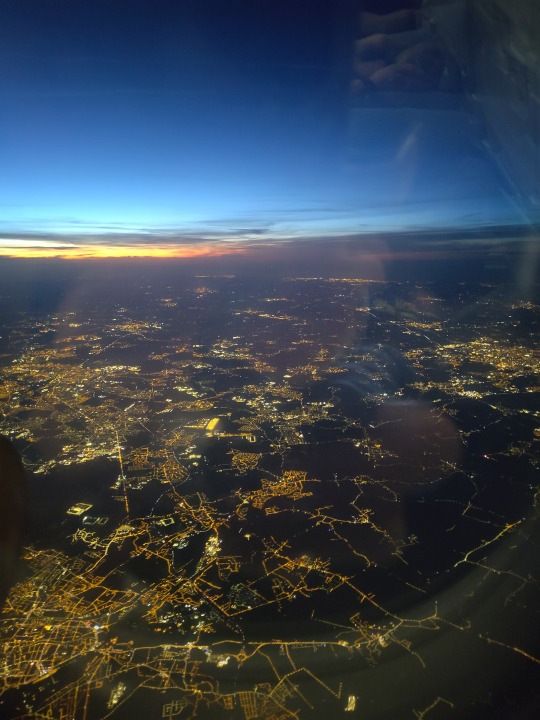
Map Sequence
You know those animated travel maps in movies that let you follow the characters’ route? Well, my friend and I seem to be stuck in one of those.
Together we opened the biggest book in the library, got sucked in, and now it’s telling us about the cultures of so many different places, so very far apart. But we’re never really landing on the map, seeing everything from the sky without getting immersed.
The lights shine up at us in different colours, the rivers draw patterns we’ve never considered. In a way, this ongoing map sequence is comfortable. We can’t see the dotted lines behind us or ahead. We roll with it, and we’ve both reached a point at which we’re no longer certain whether we consider the eventual destination an escape or some lurking trap. If the book ever lets us go, we will know a little more about a lot of things, but will we really have learned?
The map keeps moving, and we continue to catch up.
—
[Image description: This photo shows a dark landscape, seen from the window of an aeroplane, with patterns of light close enough together that they seem to hint at a city. At the horizon, the sun is setting.]
#plane window#sunset#aerial view#city lights#photography#flash fiction#landscape from the sky#map sequence#398
2 notes
·
View notes
Text
I've been really into IS3 since the update, and I really like the additions and changes, but some of the new stages feel very IS2, in that they're kind of just a check to make sure you have a ranged unit or a medic or something, and they feel weirdly out of place
#arknights#IS3 still kind of had some of those to begin with#like with how malody makes sure you have aoe or block count#but IS2 had a million poison or dp down or aerial unit maps#and easing up on those was imo a good idea#so it feels weird it being walked back a bit
16 notes
·
View notes